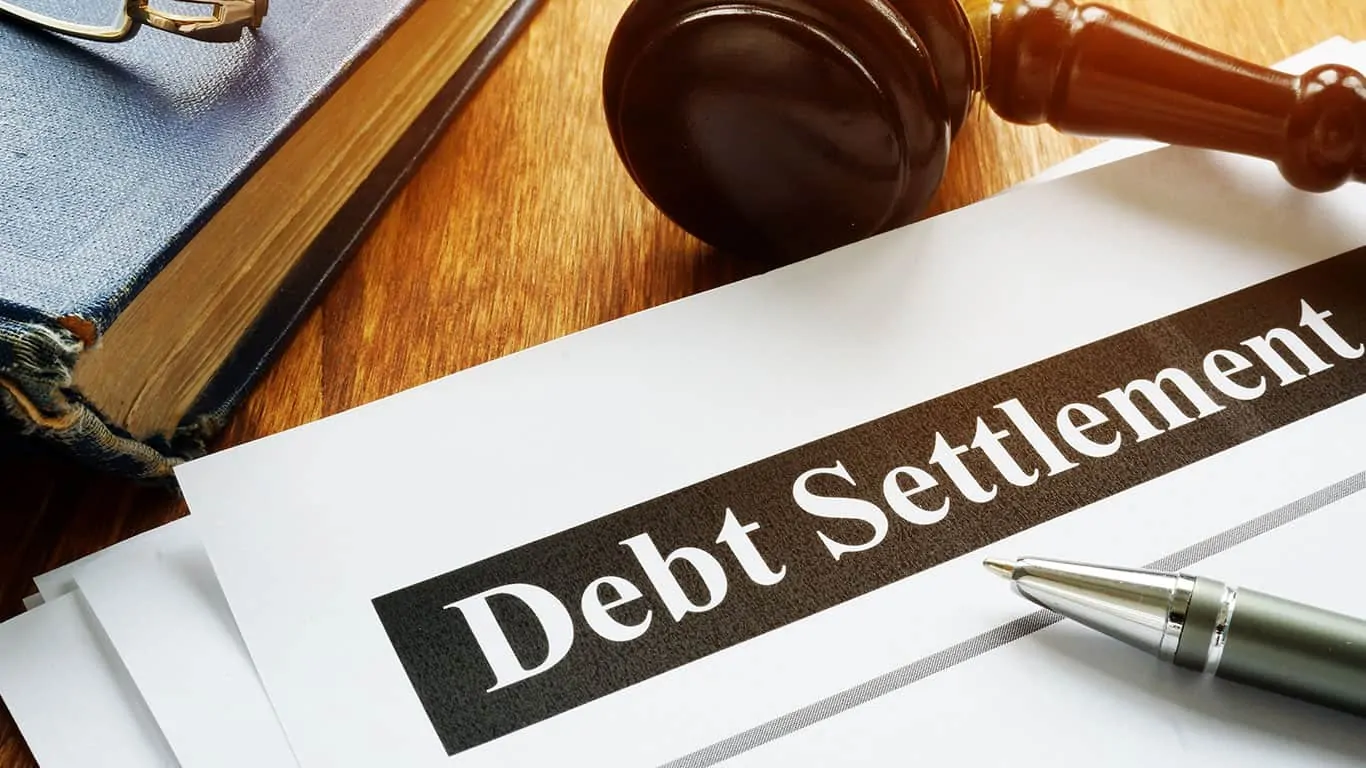It’s not right for everyone, but when it works, it can be life-changing.
Credit cards are the best and worst forms of debt.
They’re the worst because interest rates can top 20%. That’s double most mortgages and car loans. But credit card debt is better than a mortgage or car loan because you’re eligible for debt settlement.
Done right, you’ll pay pennies on the dollar. If you owe $10,000, you might pay back half that. Of course, the trick is doing it right.
Let’s walk you through it. And if it gets too confusing, I’ll tell you where to call to get a free debt analysis from a certified credit counselor – with no obligation to do anything afterward.
How debt settlement can get rid of your credit card balances
Debt settlement companies negotiate with creditors on your behalf. You can do it yourself, but it’s the equivalent of reroofing your house instead of calling a contractor. Without the resources and know-how, you may never solve the problem – or make it worse.
The best debt settlement companies have established relationships with creditors. Depending on the relationship is how much money they can save you. In many ways the negotiation is in the credit card companies’ best-interest. They’re better off getting a smaller payment than nothing when customers go bankrupt.
Debt settlement isn’t the best fit for everyone. You can find out if you’re a good candidate for debt settlement in three minutes using Instant Debt Advisor℠. It’s a free tool that can analyze your current financial situation and tell you the best solutions for you and your debt. Answer its brief questionnaire and find out the in three minutes. There’s no impact on your credit and no commitment required.
How debt settlement works in 5 steps
Would you rather pay $10,000 in credit card debt or $4,000? That’s what a debt settlement company can do for you. Most people save $2.64 on their credit card debt for every $1 paid to a reputable debt settlement company.
The process is pretty straightforward. Here’s how it works in a nutshell:
1. Hire a debt settlement company
When working with a debt settlement company, you will make monthly payments which will be set aside in a designated account. The payment amount is often significantly less than the total monthly payment you’re making on all credit card debts.
Once these funds reach a sizable lump sum, the company will contact your lender(s) with an offer. Experienced and likely to have standing relationships with various financial institutions, working with professionals can increase the chances of successful credit card debt negotiation.
These are for-profit companies and will charge you. Most debt settlement company fees are around 20-25% of the total amount of your debt and they may charge additional fees for things like maintaining your funds. Buyer beware: There’s no shortage of fraudsters claiming they work for legitimate debt settlement companies. It’s important to know signs of a scam. The biggest red flag? They charge fees upfront.
2. Decide which card balances to settle
Settling a credit card balance will result in that card being closed. If you want to leave a card or two open in case of a financial emergency, you shouldn’t consider it for settlement (instead, use consolidation or a debt management plan).
A few other things to consider when deciding which debts to include:
- The age of the account: The older it is, the more likely the credit card company will agree to settle. But keep in mind that closing your more established accounts will hurt your credit age, a lesser factor used to determine credit score.
- Who owns your debt: Know if the credit card company charged off your debt to a collection agency. This could hurt or help your odds, depending on the policy of each.
- How much you owe: Large balances over $10,000 are the best candidates for debt settlement. A credit card company or collection agency may not be willing to settle for smaller amounts. If your debt has gone to collections, verify exactly how much you are said to owe with debt validation.
If you’re not sure where to start, map out all your credit card balances, noting who they’re owed to, how delinquent you are on payments, and by how much.
3. Put money aside for payment
If you are working with a debt settlement company, they will help you determine how much you can afford to set aside each month while still making the minimum payments to your accounts.
If you’re not working with a professional, you’ll need to be disciplined and contribute to a settlement payment on your own. Creating a separate bank account can be helpful in setting aside money that you don’t want to accidentally spend.
4. Negotiate with the credit card company
Once you’ve accumulated enough funds to approach the credit card company it’s time to negotiate. Simply asking for your debt to be forgiven isn’t going to be enough. You’ll need to explain your financial situation and have a good reason to settle.
You’ll also want to be clear about what you want. In addition to having the debt settled for a fraction of the full amount, you want to negotiate items that can lessen the damage to your credit:
- Negotiating to list a credit account status as paid in full.
- Negotiating to re-age an account to remove delinquent payments.
- Using pay for delete to remove a debt collection account from your credit report.
5. Get agreements in writing
Once you’ve reached an agreement with the credit card company or collection agency, it’s important to get everything in writing and have both parties sign the agreement. Verbal agreements won’t protect you if your account is accidentally charged off and sent to collections. A written agreement will help you dispute any erroneous charges on your credit report down the line.
Items you’ll want to be sure are included:
- Debt validation notice
- The agreed settlement amount
- Payment date/schedule
- Promise that the debt will be considered ‘paid in full’
- Agreement to stop future collection efforts
- Conditions that would breach the agreement
Free debt settlement letter template »
Who’s a good candidate for credit card debt settlement?
The typical debt settlement customer owes $28,000 in debt on seven unsecured accounts like credit cards or medical bills.
That’s according to an extensive report led by the leading debt settlement trade association called the Americans Fair Credit Council. In the study of 450,000 debt settlement customers, “Seventy-four percent of these individuals successfully settled at least one account through the debt settlement program over the first 36 months.”
Making it a far more efficient and cost-effective debt solution than an alternative like bankruptcy. After fees to the debt settlement company, most people pay back 32 percent of what they owed their creditors, the study says.
Pros and cons of credit card debt settlement
Settlement allows a person to only pay back a percentage of what they owe. In return, the creditor discharges the remaining balance. The idea of paying less than you owe makes it a highly attractive option. Plus, settlement can get rid of credit card debt quickly and cost significantly less than other debt relief options. But is settling credit card debt really the best way to deal with those pesky bills?
| Pros | Cons |
|---|---|
| It usually takes less time than other solutions, especially compared to making minimum payments | Settlement typically generates negative items on your credit report, which may decrease your credit score |
| You can get out of debt for less than you owe | You could be on the hook for income taxes for the settled debt |
Benefits of credit card debt settlement
The primary benefits of this approach are that it’s faster and cheaper than other debt solutions.
With debt settlement, you might only pay between 10% and 50% of the total amount owed (the average consumer can save 30%, says the AFCC.
Settling can help you avoid late fees and the trap of minimum payments, and lower your risk of going into default. If you’re drowning in a considerable amount of credit card debt, settling can provide a clean slate without being as damaging as declaring bankruptcy.
Drawbacks of credit card debt settlement
This option only works if you can get card issuers or collection agencies to agree to let you settle (more on that later). If you are able to pursue this avenue, then there are several drawbacks to consider:
- Credit damage: Settlement often requires paying a large lump sum upfront. Until you’ve put enough money aside to make an offer to the credit card issuer or collection agency, you may continue to accrue late fees and missed payment remarks on your credit report. Those don’t go away even after the debt’s marked as ‘settled’ (which itself is another negative remark that will ding your credit and stay on your report for 7 years).
- Closed credit accounts: Any credit accounts included in settlement will automatically be closed once the agreed-upon settlement amount is paid. This will both lower your credit score and leave you with fewer credit cards to use for financial emergencies. If your credit is severely damaged, either before or because of settling, getting a new credit card could be tough and leave you without a financial safety net.
- Loss of future buying power: If you have important purchases coming up in the next few years such as buying a house, a new car, or starting a business, the credit score consequences of settling your credit card debt could put those in jeopardy. You’ll need to weigh if fast debt relief is worth the long-term impact it will have on your finances.
- Tax consequences: Lastly, the amount of your balance that you don’t end up paying could come back to bite you by being treated as taxable income. If this ends up being the case, the credit card company you settle with will send you a 1099-C tax form.










